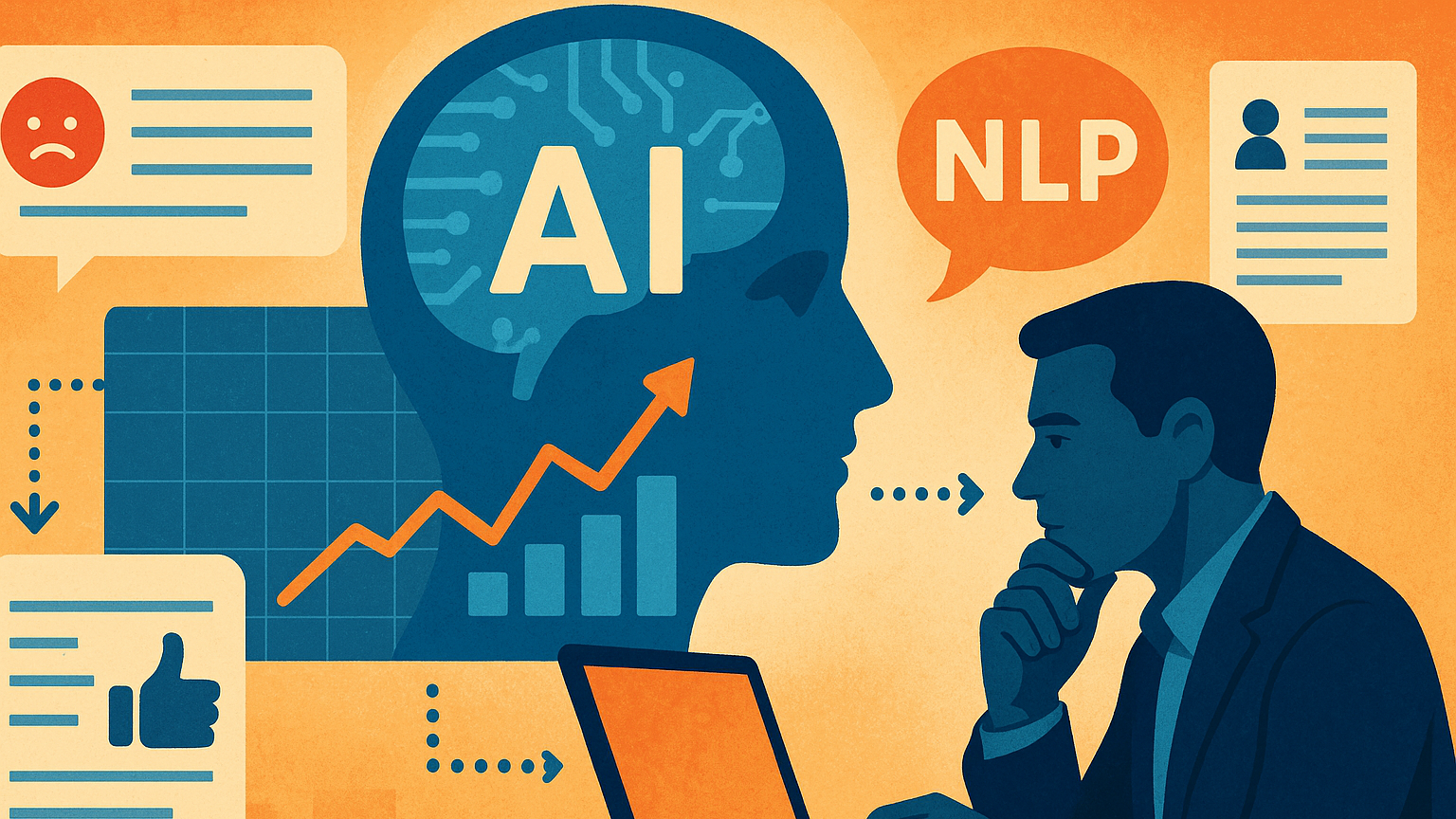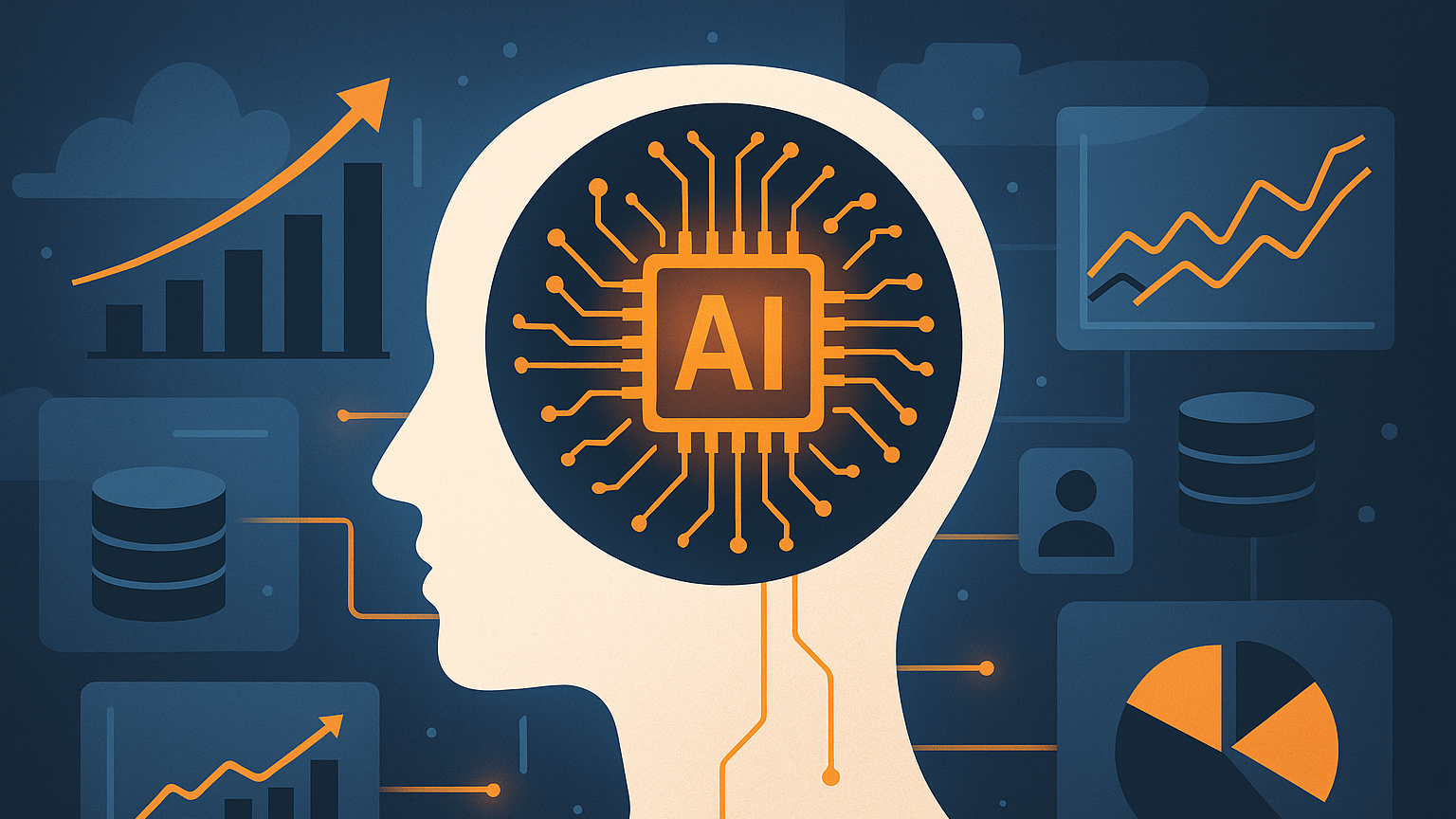
AI Awareness for Sales forecasting and pipeline conversion
AI is changing how you predict revenue and convert pipeline opportunities into closed deals. This article gives you practical, business-focused guidance on how AI shifts the day-to-day work of sales leaders, revenue operations, finance teams, and sellers, and how you can increase productivity across forecasting and pipeline conversion activities. You’ll find explanations of key concepts, implementation advice, governance considerations, and concrete steps you can take to pilot, measure, and scale AI-driven forecasting and pipeline conversion improvements in your organization.

Introduction: why this matters to you
You rely on accurate sales forecasts and healthy pipeline conversion rates to make strategic decisions, allocate resources, and manage investor and stakeholder expectations. As AI technologies mature, they can do more than automate tasks — they can help you spot patterns you wouldn’t see, prioritize the right opportunities, reduce forecast variance, and free your team to focus on high-value conversations. Understanding how to integrate AI into forecasting and pipeline management gives you a competitive edge and protects you from being surprised by revenue volatility.
The AI opportunity in sales forecasting
AI can improve the accuracy, agility, and explainability of your forecasts. Rather than just extrapolating from historical totals, AI models can incorporate thousands of signals — salesperson activity, pipeline age, deal size, customer sentiment, product usage, macroeconomic indicators — and learn which combinations predict closes. When you adopt AI thoughtfully, you’ll see fewer last-minute surprises, better resource allocation, and clearer insights into which actions move the needle on conversion rates.
Key AI concepts you should know
Before you change processes, it helps to know basic concepts so you can ask the right questions of vendors and data teams. Machine learning means models learn patterns from data and improve predictions without being explicitly programmed; natural language processing allows models to interpret emails, calls, and CRM notes; time-series methods help you capture seasonality and trends. By being literate in these ideas, you’ll be better equipped to judge model outputs, spot overfitting, and understand trade-offs between interpretability and performance.
Machine learning fundamentals
Machine learning models for forecasting look for relationships between input variables (features) and outcomes (targets). In sales forecasting, the model’s target might be a probability that a deal closes within a quarter or the expected value of revenue from a pipeline segment. You should be comfortable with concepts like training and test sets, cross-validation, feature importance, and the difference between predictive accuracy and causal inference so you can evaluate claims and monitor model health.
Natural language processing (NLP)
A lot of valuable sales signals live in unstructured text: email content, call transcripts, CRM notes, support tickets, and proposals. NLP techniques let you extract sentiment, intent, objection patterns, and topic trends from these sources. When you use NLP, you can augment numeric pipeline signals with qualitative context — for example, whether a customer’s language indicates urgency — and that additional context often improves forecasting and conversion predictions.

Time series and forecasting approaches
Sales data has temporal properties: seasonality, recency effects, and trend shifts. Time-series models capture those properties and are especially useful for volume forecasting and trend projection. You’ll want models that can handle irregular intervals, rollups across product lines or territories, and sudden shifts from promotions or market disruption. Combining time-series approaches with cross-sectional machine learning models gives you robust forecasts that respect both temporal patterns and cross-sectional predictors.
Data quality and governance: the foundation you need
Your AI models are only as good as the data you feed them. Data quality, consistency, and governance determine whether predictions are trustworthy. You must clean duplicate records, ensure stage definitions are uniform across teams, standardize product and region labels, and create clear rules for how closed-won and closed-lost reasons are recorded. Without this work, models will learn the noise in your CRM and produce unstable or biased forecasts.
Data integration and pipelines
To produce timely forecasts, you’ll need reliable data pipelines that aggregate CRM records, marketing automation, customer success metrics, product usage, finance systems, and external economic indicators. Build incremental ETL/ELT processes with monitoring and alerting so you’re not surprised by missing data. This integration gives your models a richer feature set and reduces the manual data wrangling that often slows down forecasting cycles.

Forecasting methods: statistical to advanced ML
There’s a spectrum of approaches you can adopt for sales forecasting. Simple methods like moving averages and weighted pipeline rollups are easy to implement and interpret, but they miss complex interactions. Classical statistical models (ARIMA, exponential smoothing) handle temporal dynamics well. Machine learning models (tree-based models, gradient boosting) can capture nonlinear relationships across many features. Deep learning (LSTM, transformers) can model complex temporal sequences and unstructured inputs at scale. Choose the right level of sophistication for your data volume and business needs.
Traditional statistical methods
If you’re starting out, statistical methods provide a reliable baseline. They’re transparent and often require less data and computational complexity. Use them to set expectations and to sanity-check more complex models, especially when you need explainable forecasts for finance or investor conversations. They’re also helpful when your dataset is small or when you need to produce forecasts quickly without building extensive infrastructure.
Machine learning models for forecasting
Tree-based algorithms like XGBoost or Random Forest often deliver strong predictive performance on structured sales datasets. They handle heterogeneous data types, missing values, and nonlinear interactions effectively. You’ll find that these models improve win-probability scoring and opportunity-level forecasts. However, they require careful cross-validation, feature engineering, and monitoring to avoid drift and ensure stable predictions over time.
Deep learning and advanced approaches
When you have large datasets that include sequences (e.g., event logs, call transcripts) and unstructured content, deep learning models can uncover subtle patterns that simpler models miss. Recurrent neural networks, LSTMs, and transformer architectures can ingest both time-series data and text to create richer, multi-modal forecasts. These models tend to be more computationally expensive and less transparent, so you should balance performance gains against explainability and operational complexity.

Feature engineering: what features matter most
Feature selection and engineering are where domain knowledge translates directly into model performance. Features like deal age, historical win rate for similar deals, sales rep experience, engagement metrics, product mix, discount levels, and buying committee composition often carry predictive weight. You should iteratively test and validate which features improve forecasts and resist the temptation to overfit using spurious correlations that won’t generalize.
Temporal and behavioral features
Temporal features — how long a deal has been in a stage, time since last contact, velocity through stages — are critical predictors. Behavioral signals such as email open rates, demo attendance, product trial usage, or support interactions provide real-time evidence of buyer intent. By engineering these features thoughtfully, you’ll enable models to detect momentum and risk more reliably than by relying solely on stage and value.
External and macro features
Don’t ignore external data: market trends, industry growth rates, economic indicators, competitor activity, and public events can all influence buying behavior. When you incorporate these signals, your forecasts become more resilient to macro swings and you’ll be able to explain deviations when external factors matter. External data is especially useful for strategic forecasting and scenario planning.
Optimizing pipeline conversion with AI
AI can do more than predict outcomes; it can help you improve conversion rates by recommending actions. Models can surface which accounts are ready for outreach, suggest the right next step, or indicate when to escalate. By integrating AI into workflows, you can prompt sellers to prioritize high-probability deals, trigger automated touches for at-risk accounts, and guide coaching conversations with prescriptive insights rather than intuition alone.
Lead scoring and prioritization
Lead scoring models rank prospects by conversion probability using a combination of firmographic data, engagement metrics, and intent signals. When you operationalize scoring in your CRM and sales cadence, reps can focus on high-impact leads first. This reduces wasted effort and increases average conversion rates. Successful lead scoring requires continual calibration and a feedback loop that reconciles predicted scores with actual conversion outcomes.
Modeling stage transitions and win probability
Beyond scoring leads, model the probability of moving from one stage to the next and the likelihood of an opportunity ultimately closing. This granular approach helps you pinpoint conversion bottlenecks and forecast pipeline health at the stage level. When you can quantify the expected value per stage, you’ll better understand which interventions (pricing adjustments, executive involvement, or technical demos) yield the highest return on effort.
Churn and risk prediction
For your renewals and account expansion motions, churn prediction models can identify accounts that need attention before they decide to cancel or down-sell. Early warning signals — declining product usage, lower NPS, or stalled projects — enable your customer success and renewal teams to act preemptively. Reducing churn directly improves your forecast reliability and supports sustainable revenue growth.
AI-powered CRM and operational enhancements
Modern CRMs increasingly incorporate AI natively to automate administrative work, recommend next steps, and surface insights. These enhancements reduce the manual burden on sellers and make data capture more consistent. When your CRM captures cleaner signals and suggests prioritized actions, the whole forecasting process becomes faster, more accurate, and less dependent on individual judgment.
Real-time dashboards and alerting
Real-time dashboards powered by AI allow you to spot anomalies, surface at-risk deals, and detect pipeline leakage as it happens. Alerts can be configured for sudden drops in engagement, large deals that have stalled, or territory-level variance from targets. These timely signals give you the chance to intervene while there’s still time to influence outcomes, rather than discovering issues in month-end reviews.
Explainability and building trust in AI
You’ll only get adoption if people trust the AI outputs. Explainability tools help you show why a model made a particular prediction by surfacing top features, counterfactual scenarios, and confidence intervals. Transparent explanations help finance and sales leadership accept machine-generated forecasts and enable reps to learn why certain behaviors correlate with success. Make explainability a requirement for any model you deploy into production.
Human-in-the-loop workflows
Even with accurate models, you should design human-in-the-loop processes that let sellers and managers provide feedback, correct predictions, and contribute domain knowledge. This feedback improves model quality over time and makes the system adaptive. When humans vet model suggestions before major decisions, you maintain accountability while benefiting from automation.
Change management and adoption strategies
AI succeeds when people change how they work. Start with pilot programs in specific segments or territories, involve sales leadership early, and create clear success criteria. Training, role-based playbooks, and easy-to-use dashboards are critical to adoption. Celebrate early wins publicly and listen closely to feedback so you can refine models and workflows based on real-world use.
Training and enablement
Training should go beyond tool demos; teach your team how to interpret model outputs, what actions to take, and how to provide corrective feedback. Role-based training for reps, managers, and revenue operations ensures everyone understands the value and limitations of AI. Ongoing enablement sessions and cheat sheets help convert initial curiosity into habitual use.
Process redesign and incentives
When AI changes priorities, you may need to adjust sales processes and incentives so behaviors align with predicted outcomes. If your model recommends more emphasis on expansion deals but comp plans reward only new logos, you’ll face resistance. Make sure incentives, KPIs, and processes reinforce the behaviors AI identifies as most valuable.

Ethics, bias, and compliance considerations
AI models can reproduce or amplify existing biases in your data, which can lead to unfair or legally risky decisions. You must audit models for disparate impacts, especially when they influence lead allocation, promotion opportunities, or compensation. Establish governance processes, fairness checks, and remediation plans to ensure ethical use of AI in sales operations.
Data privacy and security
Sales models often use sensitive customer and prospect data. Ensure you have clear consent, encryption at rest and in transit, and access controls. Comply with regulations like GDPR and CCPA when using personal data, and document data use cases so stakeholders understand the legal and ethical boundaries of your AI initiatives.
Measuring ROI: what success looks like
To justify AI investments, define and track measurable outcomes. Common KPIs include forecast accuracy (MAPE, RMSE), pipeline conversion rates, average deal velocity, pipeline coverage ratios, churn reduction, and cost-per-acquisition. You should also measure process efficiency gains: time saved on forecasting cycles, reduced manual data cleanup, and increased selling time for reps. When you tie AI projects to concrete financial metrics, you’ll secure continued executive support.
KPIs and short list to monitor
- Forecast accuracy and bias metrics (e.g., MAPE, bias)
- Win rate and conversion by stage
- Deal velocity and average sales cycle length
- Pipeline coverage and expected value vs. quota
- Time saved on forecasting and admin tasks
Pilot projects and scaling
Start with a tight pilot: pick a manageable segment, define success metrics, and limit the scope to a few use cases such as opportunity-level win probability and lead scoring. Use the pilot to validate data pipelines, surface adoption blockers, and quantify improvements. Once you demonstrate positive ROI and adoption, plan for phased scaling across geographies, products, and lines of business with repeatable playbooks.
Implementation roadmap and checklist
An effective implementation roadmap balances speed with governance. Begin with data assessment and quick wins (cleaning CRM stage definitions, implementing basic lead scoring), then progress to model development and pilot deployment. Establish monitoring, feedback loops, and explainability from day one. Define roles and responsibilities across revenue operations, data science, IT, and sales leadership so you avoid long delays and maintain momentum.
Common pitfalls and how to avoid them
You’ll encounter common traps: poor data hygiene, overreliance on black-box models, lack of stakeholder buy-in, and failure to monitor model drift. Avoid these by investing in data quality, choosing interpretable models when possible, engaging users early, and implementing continuous monitoring. Keep the scope pragmatic and focus on high-impact use cases first to build credibility.
Tools and platforms to consider
There are many tools available, from built-in CRM AI features to dedicated forecasting platforms and cloud ML services. Evaluate vendors on their ability to integrate with your systems, provide explainability, support model retraining, and offer robust security. Consider open-source frameworks for custom needs but weigh development effort against off-the-shelf solutions that may accelerate time to value.
Skills and organizational capabilities you’ll need
Successful AI adoption requires a mix of skills: data engineering to build reliable pipelines, data science to develop and validate models, product and analytics to operationalize insights, and change management to drive adoption. You may choose to upskill internal teams, hire specialized talent, or partner with vendors and consultants depending on your timeline and budget.
Scaling operationally: monitoring and model lifecycle
Once models are in production, you’ll need processes for monitoring performance, detecting drift, and retraining. Create dashboards for model health, prediction distributions, and feature stability. Define triggers for retraining (e.g., performance degradation or significant business changes) and maintain versioning of datasets and model artifacts so you can audit decisions and roll back if necessary.
Case examples and quick win scenarios
Teams that successfully applied AI to forecasting often started with focused, high-value pilots: improving forecast accuracy for enterprise deals, implementing lead scoring for inbound SDR routing, or using churn models to reduce renewal losses. These quick wins built confidence, generated measurable ROI, and helped scale AI practices across the organization by demonstrating tangible benefits to revenue and efficiency.
Future trends you should watch
AI in sales forecasting will continue to evolve toward multi-modal models that combine text, audio, product telemetry, and structured CRM data. Expect stronger real-time forecasting, prescriptive recommendations that suggest the exact next action, and increased use of causal models to test “what-if” scenarios. You’ll also see more automated model governance and explainability features embedded in platforms as regulatory scrutiny grows.
Conclusion and next steps for you
AI offers a practical pathway to more accurate forecasting and higher pipeline conversion rates, but it requires disciplined data practices, human-centered workflows, and clear measurement. Start with a focused pilot, prioritize data hygiene, involve stakeholders early, and build feedback loops so the models learn from real-world outcomes. With the right approach, you’ll reduce surprises, improve deal outcomes, and free your team to focus on building relationships that close business.
